
¡¾̀âÄ¿¡¿²ÄÁÏ̉»£º
2011Äê1ÔÂ1ÈƠ8µăƠû£¬ÖĐÑëµçÊÓ̀¨¼Ç¼ƵµÀƠưʽ¿ª²¥£¬ĐźŸ²¸ÇÈ«Ç̣£¬×÷ΪÖĐ¹úµÚ̉»¸ö¹ú¼̉¼¶µÄר̉µ¼Í¼ƬƵµÀ£¬̉²ÊǵÚ̉»¸ö´Ó¿ª²¥Ö®Ê¼¾ÍĂæỊ̈È«Ç̣²ÉÓĂË«Óï²¥³öµÄƵµÀ£¬ËüỊ̈ÊÀÈËÁÁ³öÁËÓµÓĐÈËÎľ«ÉñµÄÖĐ¹úĐÎÏó¡£ÑëÊӼͼƵµÀÔÚÄÚÈƯ±àÅÅÉϽøĐĐÁËÏêϸµÄ¹æ»®£¬Ö÷̉ª³ÊÏÖËÄ´óÖ÷̀åÄÚÈƯ¡¢Áù´óÖ÷̀âʱ¶ÎµÄ²¥³ö̀Øµă£¬̉ÔÆÚ´ïµ½¹æÄ£»¯µÄ²¥³öЧӦ¡£ÑëÊӼͼƵµÀͬʱ²ÉÓĂ¹ú¼Ê¼Í¼ƬƵµÀµÄͨĐĐ·½Ê½£¬µ»¯À¸Ä¿¸ÅÄǿ»¯´óʱ¶Î±àÅÅ£¬̉ÔÖ÷̀⻯¡¢ÏµÁĐ»¯ºÍ²¥³ö¼¾µÄ·½Ê½£¬̀áÉư×ÔÉíµÄÓ°ḮÁ¦ºÍĂÀÓ₫¶È¡£
£¨Ơª±à×ÔÑîÓñ½àµÈ¡¶Ơæʵ¾Û½¹£º2010~2011ÖĐ¹ú¼Í¼ƬƵµÀÔËÓªÓë¼Í¼Ƭ²ú̉µ·¢Ơ¹¼Ç¼¡·£©
²ÄÁ϶₫£º

×¢£ºÈºÖÚ¹¹³É·´Ó³µÄÊÇÊƠÊÓÈËȺµÄ¹¹³É£¬»Ø´đÁË¡°ËÔÚ¿´¸ĂƵµÀ¡±µÄÎỀ⣬¼¯ÖжÈÊÇÄ¿±êȺÖÚÊƠÊÓÂÊÓë×ǛåȺÖÚÊƠÊÓÂʵıÈÖµ£¬±íʾµÄÊÇÄ¿±êȺÖÚÏà¶ÔÓÚ×Ǜå¹ÛÖÚµÄÊƠÊÓ¼¯ÖĐ³̀¶È£¬Äܹ»»Ø´đ¡°Ë¸üϲ»¶ÊƠ¿´Ơâ¸öƵµÀ¡±µÄÎỀ⣻¼¯ÖĐ¶ÈµÄ±ÈÖµ´óÓÚ100%£¬±íʾ¸ĂÀàÄ¿±êȺÖÚµÄÊƠÊÓÇăỊ̈¸ßÓÚƽ¾ùˮƽ¡£
²ÄÁÏÈư£º
ÔÚÖƲ¥ÔËӪģʽ·½Ă棬ÑëÊӼͼƵµÀʵĐеÄÊÇƵµÀ»¯ÔËӪģʽ¡£ÑëÊÓÊǼͼƬµÄÖ÷̉ªÖÆ×÷»ùµØ¡£ÖÆ×÷³öµÄ¾«Æ·½ÚÄ¿ÊưÁ¿Öڶࡣµ±È»£¬ÆµµÀ»¯ÔËӪģʽ̉²ÓĐÆä×ÔÉíµÄÁÓÊÆ£¬ÁÓÊÆÔÚÓÚƵµÀ¿É̉Ôµ÷¶¯µÄ×ÊÔ´·Ç³£ÓĐÏ̃£¬ÆäÈÚ×ÊÇ₫µÀ¡¢²úÆ·Éè¼Æ¡¢È˲ÆÎï×ÊÔ´µ÷¶È¶¼»áÊܵ½ÖÖÖÖÏ̃ÖÆ¡£ÑëÊӼͼƵµÀÄ¿Ç°Ơư»ư¼«ÍƽøÖƲ¥·ÖÀëģʽ£¬½ÚÄ¿ÖÆ×÷̉ÔÉç»áƠĐ±ê¡¢ÁªºÏÖÆ×÷¡¢¹ºẬ×÷ΪÖ÷̉ª·½Ê½£¬²¢¸¨̉Ô×ÔÖƾ«Æ·£¬Îª½¨Á¢½ÏΪ½¡È«µÄÖÆ×÷¹ÜÀíģʽ×öºĂ×¼±¸¡£
£¨Ơª±à×ÔƠÅͬµÀµÈ¡¶2011Äê¹ú¼̉¼Í¼ƬƵµÀ·¢Ơ¹±¨¸æ£¨Ï£©¡·£©
²ÄÁÏËÄ£º
×ܲ¿Î»ÓÚĂÀ¹úÊ׶¼»ªÊ¢¶ÙµÄ¹ú¼̉µØÀíƵµÀÊÇ̉»¸öÈ«Ç̣ĐԵĸ¶·ÑÓĐÏßµçÊÓÍø¡£Ä¿Ç°£¬¹ú¼̉µØÀíƵµÀ̉Ѿ̉Ô34ÖÖÓïÑÔת²¥ÖÁÈ«Ç̣166¸ö¹ú¼̉ºÍµØÇøÓâ2̉Ú9ǧỊ́ÓĂ»§£¬×÷Ϊ̉»¸ö´¿¼Í¼ƬƵµÀÄܹ»È¡µĂÈç´Ë׿ԽµÄ³É¾Í£¬³ưÁ˸ßÖÊÁ¿¡¢¸ß¹ÛÉÍĐԵĽÚÄ¿ÄÚÈƯÖ®Í⣬ÓëÆäƵµÀ×ÔÉíµÄÖƲ¥ÔËÓĂģʽÊÇ·Ö²»¿ªµÄ¡£ÆäÖƲ¥ÔËӪģʽÈçÏ£ºÓĐÏßµçÊÓϵͳÊÇÔڵط½Ơ₫¸®µÄÅú×¼ÏÂÓÉÓĐÏßµçÊÓϵͳÔËÓªÉ̀Ͷ×ʽ¨Á¢µÄ£¬ÓĐÏßµçÊÓϵͳֱ½ÓĂæỊ̈¶©»§ÊƠÈ¡·ÑÓĂ£¬ÓĐÏßµçÊÓϵͳÔËÓªÉ̀ÊÇÖ¸ÓµÓĐ²¢ÔËÓªÓĐÏßµçÊÓϵͳµÄÆó̉µÊµ̀å¡£ÓĐÏßµçÊÓ½ÚÄ¿̀ṩÉ̀ΪÓĐÏßµçÊÓϵͳÔËÓªÉ̀̀ṩ½ÚÄ¿£¬¾ß̀åµ½¹ú¼̉µØÀíƵµÀ¶øÑÔ£¬ĂÀ¹ú¹ú¼̉µØÀíµçÊÓ¹«Ë¾̉Ô¼°ÆäËûÇ₫µÀ³Đµ£̀ṩƬԴµÄÈÎÎñ£¬¹ú¼̉µØÀíƵµÀ³Đµ£µÄÊǽÚÄ¿ÖÆ×÷µÈÈÎÎñ£¬¼´ÈĂÀ´×Ô¹ú¼̉µØÀíµçÊÓ¹«Ë¾µÈÇ₫µÀµÄµ¥¸öµÄƬԴ±ä³ÉÓĐ»ú½áºÏµÄƠû̀壬ÊÊÓÚÔÚµçÊÓÉϲ¥·Å£»¿µ¿¨Ë¹̀صçĐŹ«Ë¾×÷ΪÓĐÏßµçÊÓϵͳÔËÓªÉ̀£¬Ộ³Đµ£°ÑµçÊÓĐźŴ«Ë͵½Ç§¼̉Ị́»§µÄµçÊÓ»úÉϵļ¼ÊơĐÔ²¥³öÈÎÎñ¡£ £¨Ơª±à×Ô³₫»ÛƼ¡¶¶àÔªÑÓÉ́£¬ÓĐ»ú»¥¶¯¡ª¡ªĂÀ¹ú¹ú¼̉µØÀíƵµÀÔËӪģʽ³ờ½¡·£©
¡¾1¡¿ÏÂÁĐ¶Ô²ÄÁÏÏà¹ØÄÚÈƯµÄÊáÀí£¬²»ƠưÈ·µÄ̉»ÏîÊÇ£¨3·Ö£©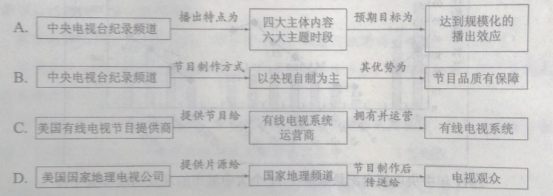
¡¾2¡¿ÏÂÁĐ¶Ô²ÄÁÏÏà¹ØÄÚÈƯµÄ¸ÅÀ¨ºÍ·ÖÎö£¬ƠưÈ·µÄÁ½ÏîÊÇ
A£®ÖĐÑëµçÊÓ̀¨¼Ç¼ƵµÀÔÚÄÚÈƯ±à¼ÉϽøĐĐÁËÈÏƠæÏêϸµÄ¹æ»®£¬̉ÔÆÚ½«À´Äܹ»³ÊÏÖ³öÖ÷̀⻯¡¢ÏµÁĐ»¯µÄ½ÚÄ¿²¥³ö·½Ê½¡£
B£®¸ù¾Ư²ÄÁ϶₫ÖĐĐÔ±đ¡¢ÄêÁ䡢ѧÀúƠâÈưÏÎ̉ĂÇÄܹ»Á˽⵽ÖĐÑëµçÊÓ̀¨¼Í¼ƵµÀµÄ¹ÛÖÚ¹¹³ÉºÍ¼¯ÖĐ¶ÈµÄ»ù±¾Çé¿ö¡£
C£®2011Ä꣬ÔÚ71¸ö´óÖĐ³ÇÊĐµÄ¹ÛÖÚµ÷²éÖĐ£¬ÖĐÑëµçÊÓµç̀¨¼Í¼ƵµÀ¹ÛÖÚ¹¹³É×î¸ßµÄÈưÀàÈËȺ·Ö±đÊÇ£ºÄĐĐÔ¡¢45~54ËểÔ¼°¸ßÖĐѧÀú¡£
D£®¸ù¾Ư²ÄÁ϶₫¿ÉÖª£¬Ëæ×ÅÄ¿±ê¹ÛÖÚÄêÁäµÄÔö¼Ó̉Ô¼°Ñ§ÀúµÄÔö¸ß£¬¼¯ÖĐ¶ÈµÄ±ÈÖµ̉²ÔÚ²»¶ÏµØÅÊÉư¡£
E£®ĂÀ¹ú¹ú¼̉µØÀíƵµÀµÄÖÆ×÷¹ÜÀíģʽ½ÏΪ½¡È«£¬ËüÔÚÈÚ×ÊÇ₫µÀ¡¢²úÆ·Éè¼Æ¡¢È˲ÆÎï×ÊÔ´µ÷¶È·½Ăæ²»´æÔÚÊܵ½Ï̃ÖƵÄÎỀâ¡£
¡¾3¡¿¸ù¾ƯÉÏÊö²ÄÁÏ£¬¸ÅÀ¨ËµĂ÷ÖĐÑëµçÊÓ̀¨¼Í¼ƵµÀ¿ª²¥³ơÆÚÓëĂÀ¹ú¹ú¼̉µØÀíƵµÀÔÚÖ±²¥ÔËӪģʽ·½ĂæµÄ²»Í¬¡£
¡¾´đ°¸¡¿
¡¾1¡¿D
¡¾2¡¿BC
¡¾3¡¿¢ÙÖĐÑëµçÊÓ̀¨¼Ç¼ƵµÀÔÚ¿ª²¥³ơÆÚ²ÉÓõÄÊÇƵµÀ»¯ÔËӪģʽ£¬ÑëÊÓÊǼͼƬµÄÖ÷̉ªÖÆ×÷»ùµØ£»¢ÚĂÀ¹ú¹ú¼̉µØÀíƵµÀ²ÉÓõÄÊÇÖƲ¥·ÖÀëµÄÔËӪģʽ£¬½ÚÄ¿µÄÖÆ×÷Óë²¥³öÏà¶Ô·ÖÀë¡£
¡¾½âÎö¡¿
¡¾1¡¿±¾̀â×ۺϿ¼²éÎÄƠµÄÄÚÈƯºÍÊÖ·¨¡£¿¼ÉúÓ¦Öصă·ÖÎöÑ¡ÏîÄÚÈƯÓëÎÄƠÂÄÚÈƯµÄÎǺ϶ȡ£ÔÎÄÓĐ¡°̉Ô¼°ÆäËûÇ₫µÀ¡±¡£±¾̀â´Ó¿¼²éµÄ·¶Î§À´¿´£¬¼ÈÉ漰ȫƪ£¬ÓÖ²àÖؾֲ¿£»´Ó¿¼²éµÄ½Ç¶ÈÀ´¿´£¬¼ÈÓĐÖ÷Ö¼´íÎó£¬̉²ÓĐϸ½Ú´íÎó¡£½â´đ´ËÀà̀âµÄ·½·¨£ºÍ¨¶ÁÈ«ÎÄ£¬¹Øעϸ½Ú¡£
¡¾2¡¿±¾̀â×ۺϿ¼²éɸѡ²¢ƠûºÏÎÄÖеÄĐÅÏ¢¡£AÏîÄ¿µÄ´íÎó£¬ÔÎÄΪ¡°ÑëÊӼͼƵµÀÔÚÄÚÈƯ±àÅÅÉϽøĐĐÁËÏêϸµÄ¹æ»®¡¡̉ÔÆÚ´ïµ½¹æÄ£»¯µÄ²¥³öЧӦ¡£ÑëÊӼͼƵµÀͬʱ¡¡̉ÔÖ÷̀⻯¡¢ÏµÁĐ»¯ºÍ²¥³ö¼¾µÄ·½Ê½£¬̀áÉư×ÔÉíµÄÓ°ḮÁ¦ºÍĂÀÓ₫¶È¡±¡£DÏî¹éÀà´íÎó£¬ÓÉͼ±í¿ÉÖª£¬55ËểÔÉÏÈËȺ¼°¡°´óѧ¼°̉ÔÉÏ¡±Ñ§Àú¹Ø×¢¶ÈϽµ¡£EÏî¿Ï·ñ²»µ±£¬ÔÎÄÊÇ˵Đè̉ª¡°µØ·½Ơ₫¸®µÄÅú×¼¡±£¬¿É¼û̉²ÊÇÓĐÏ̃ÖƵġ£Í¨¶ÁÈ«ÎÄ£¬¹Øעϸ½Ú¡£µÚ̉»²½£ºÍ¨¶ÁÈ«ÎÄ£¬Ơû̀å¸ĐÖª¡£°ÑÎƠÎı¾»ù±¾ÊÂʵ£¬·ÖÎöÖ÷̀å¶ÔÏóÓë»ù±¾ÊÂʵ֮¼äµÄ¹Øϵ¡£µÚ¶₫²½£ºĂ÷È·Ö÷Ö¼£¬±æÇå¹Øϵ¡£½áºÏÑ¡ÏîÖ®¼äµÄ¹Øϵ×ö³ö׼ȷÅĐ¶Ï¡£
¡¾3¡¿ƠâÊÇ̉»µÀɸѡĐÅÏ¢¡¢ƠûºÏĐÅÏ¢µÄ̀⣬̉ªÏë´đ¶Ô£¬Ê×ÏÈ̉ª¸ù¾Ừâ¸É̉ªÇ󣬱ØĐë°Ñ´đ̀âÇø¼äỞ¶Ô£¬´ÓÖĐɸѡ³ö¶Ô´đ°¸ÓĐ°ïÖúµÄĐÅÏ¢£¬È»ºó»¹̉ª»á¸ÅÀ¨£¬̉ªµẳª¼̣½à£¬¾¡Á¿Ê¹ÓĂÎÄÖĐ´ÊÓï¡£ÓÉ¡°²ÄÁÏÈư¡±¿ÉÖª£¬¡°ÔÚÖƲ¥ÔËӪģʽ·½Ă棬ÑëÊӼͼƵµÀʵĐеÄÊÇƵµÀ»¯ÔËӪģʽ¡£¡¡Ä¿Ç°Ơư»ư¼«ÍƽøÖƲ¥·ÖÀëģʽ¡±£¬ÓÉ¡°²ÄÁÏËÄ¡±¿ÉÖª¡°ÆäÖƲ¥ÔËӪģʽÈçÏ£ºÓĐÏßµçÊÓϵͳÊÇÔڵط½Ơ₫¸®µÄÅú×¼ÏÂÓÉÓĐÏßµçÊÓϵͳÔËÓªÉ̀Ͷ×ʽ¨Á¢µÄ£¬ÓĐÏßµçÊÓϵͳֱ½ÓĂæỊ̈¶©»§ÊƠÈ¡·ÑÓĂ¡±¡£ÏÈ·º¶Á£ºÁ˽âÎÄƠ´ó̉â¡¢½á¹¹£¬È¦³ö¹Ø¼ü´Ê¡¢¾ä£»ÔÙÉó̀⣺ȷ¶¨·¶Î§¡¢½Ç¶È¡¢̉ªÇó£»È»ºó¾«¶Á£ºÑ°ỞÏà¹ØĐÅÏ¢£¬É¸Ñ¡¹Ø¼ü´ÊÓ×îºó¼Ó¹¤£º°´̀âÄ¿̉ªÇóƠûºÏĐÅÏ¢¡£



| Ä꼶 | ¸ßÖĐ¿Î³̀ | Ä꼶 | ³ơÖĐ¿Î³̀ |
| ¸ß̉» | ¸ß̉»Ăâ·Ñ¿Î³̀ÍƼö£¡ | ³ở» | ³ở»Ăâ·Ñ¿Î³̀ÍƼö£¡ |
| ¸ß¶₫ | ¸ß¶₫Ăâ·Ñ¿Î³̀ÍƼö£¡ | ³ơ¶₫ | ³ơ¶₫Ăâ·Ñ¿Î³̀ÍƼö£¡ |
| ¸ßÈư | ¸ßÈưĂâ·Ñ¿Î³̀ÍƼö£¡ | ³ơÈư | ³ơÈưĂâ·Ñ¿Î³̀ÍƼö£¡ |
¿ÆÄ¿£º¸ßÖеØÀí À´Ô´£º ̀âĐÍ£º
¡¾̀âÄ¿¡¿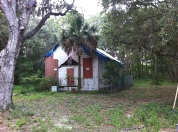 The Harrington School is an old one-room schoolhouse in Georgia. The building has not been used in years. Community leaders and even the local historical society thought it wasn¡¯t worth saving. ¡°Just look at it and you could tell it was going to fall any minute, so let¡¯s tear it down, ¡± they said.
The Harrington School is an old one-room schoolhouse in Georgia. The building has not been used in years. Community leaders and even the local historical society thought it wasn¡¯t worth saving. ¡°Just look at it and you could tell it was going to fall any minute, so let¡¯s tear it down, ¡± they said.
The Harrington School was built in nineteen twenty-five for black children on St. Simons Island. Amy Roberts well remembers she attended first grade there in nineteen fifty-three. That was a year before the United States Supreme Court ruled that schools had to be racially integrated. A number of states kept blacks from attending school with whites. After the ruling, the children joined white students at St. Simons' other elementary school.
The old schoolhouse continued to be used for social activities and a day care center. By 1970, however, it was empty. Amy Roberts worried that developers might tear it down. So she started the African-American Heritage Coalition to try to save it.
¡°If it's not saved, then eventually you would not know that we existed here on St. Simons. Everything of African-American heritage has been torn down£¬¡± she said.
In 2009 the Harrington School was weeks away from destruction. Then a local historian named Patty Deveau took a closer look. She remembered a movement called the Rosenwald Fund.Georgia historian Jeanne Cyriaque explains, ¡°At the very core of that movement was the involvement of the community, sympathetic whites and philanthropy, merging together to do what today we'd call partnerships.¡±
Julius Rosenwald was a businessman. In 1915 he donated money to black communities to build their own schools. By the late 20s, the Rosenwald Fund had donated to more than 5,000 educational buildings in 15 states across the South. One-third of rural black children were attending a Rosenwald school.
¡°This particular school kind of embodies to me what was going on with the communities at the time, because in many African-American communities, it was African-American families that gave land for these schools to be built.¡± Jeanne Cyriaque said.
Now, preservation architects are developing plans to restore the Harrington School. Amy Roberts and others were surprised by what the experts found about the structure. ¡°They went through it and they talked about how sound it was and how, you know, I mean, they'd never seen anything like this. I mean, it was, like, in great shape!¡±
What do you learn about the Harrington School?
It only has one room and is going to fall down.
It was built in 1925 and is poor condition now.
It has not been used since 1954.
Though it was built over 85 years ago, it is still in good condition.
¡¾1¡¿According to the second paragraph, we learn that _______.
the Harrington School was ruled by the United States Supreme Court
the Harrington School used to be a white school mixed with blacks
black children went to separate school before the ruling
the Harrington School was forbidden to be used for racial reasons
¡¾2¡¿The meaning of the underlined word ¡°integrated¡± is similar to _______.
mixed
completed
seperated
destroyed
¡¾3¡¿Amy Roberts is anything but _______.
a black woman
an African-American
a clerk who used to work in the African-American Heritage Coalition
a woman in her sixties
¡¾4¡¿Which of the following titles do you think would attract the readers most?
A school with a Long History
Saving a School, and Its History
Saving the African-American Heritage
The Harrington School, an African-American Heritage
²é¿´´đ°¸ºÍ½âÎö>>
¿ÆÄ¿£º¸ßÖеØÀí À´Ô´£º ̀âĐÍ£º
¡¾̀âÄ¿¡¿Ä³ÈËÉÏÎç![]() ʱ£¬³ËĦÍĐͧ̉ÔÔÈËÙ
ʱ£¬³ËĦÍĐͧ̉ÔÔÈËÙ![]() ´Ó
´Ó![]() ¸Û³ö·¢µ½¾à
¸Û³ö·¢µ½¾à![]() µÄ
µÄ![]() ¸ÛÈ¥£¬È»ºó³ËÆû³µ̉ÔÔÈËÙ
¸ÛÈ¥£¬È»ºó³ËÆû³µ̉ÔÔÈËÙ![]() ×Ô
×Ô![]() ¸ÛỊ̈¾à
¸ÛỊ̈¾à![]() µÄ
µÄ![]() ÊĐʻȥ£®Ó¦¸ĂÔÚͬ̉»̀́ÏÂÎç
ÊĐʻȥ£®Ó¦¸ĂÔÚͬ̉»̀́ÏÂÎç![]() ÖÁ
ÖÁ![]() µăµ½´ï
µăµ½´ï![]() ÊĐ£®Éè³Ë×øÆû³µ¡¢Ä¦ÍĐͧȥĿµÄµØËùĐè̉ªµÄʱ¼ä·Ö±đÊÇ
ÊĐ£®Éè³Ë×øÆû³µ¡¢Ä¦ÍĐͧȥĿµÄµØËùĐè̉ªµÄʱ¼ä·Ö±đÊÇ![]() .
.
£¨1£©×÷ͼ±íʾÂú×ăÉÏÊö̀ơ¼₫µÄ![]() ·¶Î§£»
·¶Î§£»
£¨2£©Èç¹û̉ÑÖªËùĐèµÄ¾·Ñ![]() £¨Ôª£©£¬ÄÇĂ´
£¨Ôª£©£¬ÄÇĂ´![]() ·Ö±đÊǶàÉÙʱ
·Ö±đÊǶàÉÙʱ![]() ×îĐ¡£¿ ´ËʱĐ軨·Ñ¶àÉÙÔª£¿
×îĐ¡£¿ ´ËʱĐ軨·Ñ¶àÉÙÔª£¿
²é¿´´đ°¸ºÍ½âÎö>>
¿ÆÄ¿£º¸ßÖеØÀí À´Ô´£º ̀âĐÍ£º
¡¾̀âÄ¿¡¿ÔĶÁ¡°Ä³Ê¡ÈË¿Ú³öÉúÂÊ¡¢ËÀÍöÂʱ仯ͼ¡±ºÍ¡°ÈË¿ÚÄêÁä½á¹¹±ä»¯Í¼¡±£¬Íê³ÉºóĂæµÄÎỀâ¡£

´Ó±íÖĐ¿´³ö¸ĂµØÈË¿ÚµÄ̀صăÊÇ£º¢Ù £»¢Ú £»¢Û ¡£
Ơë¶Ô65ËểÔÉÏÈË¿Ú±ÈÂʲ»¶ÏÅÊÉưµÄÇé¿ö£¬̀á³öÄăµÄ½¨̉飺 _______________________
²é¿´´đ°¸ºÍ½âÎö>>
¿ÆÄ¿£º¸ßÖеØÀí À´Ô´£º ̀âĐÍ£º
¡¾̀âÄ¿¡¿ÏÂĂæÊÇ¡°´´Çà´º¡±È«¹ú´óѧÉú´´̉µ´óÈüµÄ»á»Ơ£¬ÇëĐ´³ö³ưÎÄ×Ö̉ÔÍâµÄ¹¹Í¼̉ªËØ£¬²¢ËµĂ÷ͼĐÎÔ¢̉⣬̉ªÇóÓïÑÔ¼̣Ă÷£¬¾ä×Óͨ˳£¬²»³¬¹ư100¸ö×Ö¡£
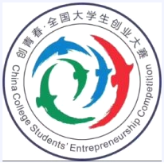
´đ£º________________________________________________________________________
________________________________________________________________________
²é¿´´đ°¸ºÍ½âÎö>>
¿ÆÄ¿£º¸ßÖеØÀí À´Ô´£º ̀âĐÍ£º
¡¾̀âÄ¿¡¿¶̀ÎĸĴí
¼Ù¶¨Ó¢Óï¿ÎÉÏÀÏʦ̉ªÇóͬ×ÀÖ®¼ä½»»»Đ̃¸Ä×÷ÎÄ£¬ÇëÄăĐ̃¸ÄÄăͬ×ÀĐ´µÄ̉ÔÏÂ×÷ÎÄ¡£ÎÄÖĐ¹²ÓĐ10´¦ÓïÑÔ´íÎó£¬Ă¿¾äÖĐ×î¶àÓĐÁ½´¦¡£Ă¿´¦´íÎó½öÉæ¼°̉»¸öµ¥´ÊµÄÔö¼Ó¡¢É¾³ư»̣Đ̃¸Ä¡£
Ôö¼Ó£ºÔÚȱ´Ê´¦¼Ó̉»¸ö©´Ê·ûºÅ(/\)£¬²¢ÔÚÆäÏÂĂæĐ´³ö¸Ă¼ÓµÄ´Ê¡£
ɾ³ư£º°Ñ¶àÓàµÄ´ÊÓĂбÏß(\)»®µô¡£
Đ̃¸Ä£ºÔÚ´íµÄ´ÊÏÂĂæ»̉»ºáÏߣ¬²¢ÔڸôÊÏÂĂæĐ´³öĐ̃¸ÄºóµÄ´Ê¡£
×¢̉⣺1. Ă¿´¦´íÎó¼°Đ̃¸Ä¾ù½öÏ̃̉»´Ê£»
2. Ö»ÔÊĐíĐ̃¸Ä10´¦£¬¶àƠß(´ÓµÚ11´¦Æđ)²»¼Æ·Ö¡£
As the saying goes, chance favored the prepared mind. I learned this from one of my experience. I was not chosen as member of the volleyball team of our school. Because of this, I decided to give up play volleyball. Luckily, my best friend stopped me but pointed out that it was my laziness and poor preparation which led to my failure. After that, I practiced playing volleyball on every day. When another tryout arrived, I was full prepared and tried my best. As a result, I was selected and became an important player on our school team.
From this, I am firmly convincing that we are able to seize a chance as long as I get well prepared.
²é¿´´đ°¸ºÍ½âÎö>>
¿ÆÄ¿£º¸ßÖеØÀí À´Ô´£º ̀âĐÍ£º
¡¾̀âÄ¿¡¿¶̀ÎÄ¸Ä´í¡£
¼Ù¶¨Ó¢Óï¿ÎÉÏÀÏʦ̉ªÇóͬ×ÀÖ®¼ä½»»»Đ̃¸Ä×÷ÎÄ£¬ÇëÄăĐ̃¸ÄÄăͬ×ÀĐ´µÄ̉ÔÏÂ×÷ÎÄ¡£ÎÄÖĐ¹²ÓĐ10´¦ÓïÑÔ´íÎó£¬Ă¿¾äÖĐ×î¶àÓĐÁ½´¦¡£´íÎó½öÉæ¼°̉»¸öµ¥´ÊµÄÔö¼Ó¡¢É¾³ư»̣Đ̃¸Ä¡£
Ôö¼Ó£ºÔÚȱ´Ê´¦¼Ó̉»¸ö©×Ö·ûºÅ£¨![]() £©£¬²¢ÔÚÆäÏÂĂæĐ´³ö¸Ă¼ÓµÄ´Ê¡£
£©£¬²¢ÔÚÆäÏÂĂæĐ´³ö¸Ă¼ÓµÄ´Ê¡£
ɾ³ư£º°Ñ¶àÓàµÄ´ÊÓĂ£¨£Ü£©»®µô¡£
Đ̃¸Ä£ºÔÚ´íµÄ´ÊÏ»®̉»ºáÏߣ¬²¢ÔڸôÊÏÂĂæĐ´³öĐ̃¸ÄºóµÄ´Ê¡£
×¢̉⣺1. Ă¿´¦´íÎó¼°ÆäĐ̃¸Ä¾ù½öÏ̃̉»´Ê£»
2. Ö»ÔÊĐíĐ̃¸Ä10´¦£¬¶àƠߣ¨´ÓµÚ11´¦Æđ£©²»¼Æ·Ö¡£
Dear Jim,
I am so exciting that you will come to China. I will free from December 18 and will have plenty of time to be together with you. I¡¯ll meet you at the airport and then you will take Bus No. 8 for my home. You worry about the weather here in your email. In a fact, the weather here is quite different from it in your city. It isn¡¯t very cold, so you needn¡¯t bring many clothes. During your stay here, I¡¯ll take you to some places of interests and you can taste some local food. I am sure we will have greatly fun together.
Looking forward to meet you soon.
John
²é¿´´đ°¸ºÍ½âÎö>>
¿ÆÄ¿£º¸ßÖеØÀí À´Ô´£º ̀âĐÍ£º
¡¾̀âÄ¿¡¿ÔĶÁÀí½â¡£
ÔĶÁÏÂÁж̀ÎÄ£¬´ÓĂ¿̀âËù¸øµÄËĸöÑ¡Ïî £¨A ¡¢B ¡¢C ºÍ D £©ÖĐ£¬Ñ¡³ö×î¼ÑÑ¡Ï²¢ÔÚ̀⿨ÉϽ«¸ĂÏîÍ¿ºÚ¡£
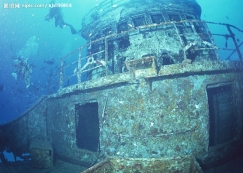
The pillage (ÂÓ¶á) and destruction of ancient shipwrecks and sunken archaeological sites by treasure hunters seeking gold and other valuables may be illegal under the terms of an international treaty under discussion by UNESCO¡¯s 188 Member States.
"Protecting our underwater heritage is extremely important and increasingly urgent as no site or shipwreck is now out of bounds for treasure hunters. New technologies have made deep-water wrecks easily accessible and these technologies are getting cheaper," warns Lyndel Prott.
According to estimates by commercial salvors (Ñ°±¦Ơß), there are some three million undiscovered shipwrecks scattered across the world¡¯s oceans. Even the figures for the known wrecks are impressive. The Northern Shipwrecks Database for example contains 65,000 ship loss records for North America alone from 1500 AD to the present. The Dictionary of Disasters at Sea by Charles Hocking (1969) lists 12,542 sailing ships and war vessels lost between 1824 and 1962.
Then there are sunken cities such as the trading town and pirate stronghold(º£µÁ±¤ÀƯ) of Port Royal in Jamaica, which disappeared beneath the waves after an earthquake in 1692. Or the remnants of ancient civilisations, such as the Lighthouse of Alexandria in Egypt, and the Neolithic villages being discovered under the Black Sea, which some believe could help explain Noah¡¯s great flood.
These treasures of cultural heritage are under serious threat. Technology now allows extraordinary access to the ocean depths for deermined and well-financed treasure hunters. And the potential rewards are huge. In 1985, American salvor Mel Fisher discovered the wreck of the Seora de Atocha, a Spanish ship that sank off the Florida Keys in 1622 with her cargo of gold, silver and jewellery worth an estimated US $400 million.
An archaeologist can spend ten years or more studying a ship, conserving its objects and publishing its findings. We gain an enormous amount of information and knowledge from this work. With treasure hunters, all of this is lost. This is tragic, for humanity as a whole.
¡¾1¡¿Why is it important and urgent to protect our underwater heritage?
A. Underwater heritage is easily accessible to treasure hunters.
B. Underwater heritage is out of reach of archaeologists.
C. New technology makes protection of underwater heritage easier.
D. There is no law to protect underwater heritage.
¡¾2¡¿What is the third paragraph mainly about?
A. Shipwrecks discovered by commercial salvors.
B. The main cause of shipwrecks.
C. The history of sunken ships.
D. The figures of shipwrecks around the world.
¡¾3¡¿What happened to Port Royal in 1692?
A. It was washed away by flood.
B. It was beneath the waves after an earthquake.
C. It was discovered under the Black Sea.
D. It was rebuilt by Noah.
¡¾4¡¿Why is Mel Fisher mentioned in the fifth paragraph?
A. He risked his life in treasure hunting.
B. He was one of the most successful commercial salvors.
C. He made a great discovery of shipwrecks.
D. He had no trouble in finding a shipwreck.
²é¿´´đ°¸ºÍ½âÎö>>
¿ÆÄ¿£º¸ßÖеØÀí À´Ô´£º ̀âĐÍ£º
¡¾̀âÄ¿¡¿ÔĶÁÀí½â
ÔĶÁÏÂÁж̀ÎÄ£¬´ÓĂ¿̀âËù¸øµÄËĸöÑ¡Ïî £¨A ¡¢B ¡¢C ºÍ D £©ÖĐ£¬Ñ¡³ö×î¼ÑÑ¡Ïî¡£
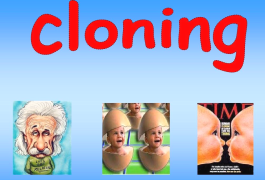
A recent announcement by scientists that they have successfully cloned the first human embryo(Åß̀¥) has caused much debate and has shocked many people around the world. On the one hand, some scientists point out that if you clone an embryo, you can produce valuable tissues(×éÖ¯) and organs that could be used to save human lives. On the other hand, many people, including some scientists, disagree and fear that if mankind interferes with (¸ÉÉæ) nature in this way, they may be on their way to producing a real-life Frankenstein's monster.
Cloning is producing an exact copy of a plant or an animal using its cells. The first mammal to be cloned successfully from an adult cell was Dolly¡ªthe sheep. She was born in 1996 and died in early 2003, at a much younger age than normal. When she was born, many people were angry because they thought cloning would create more diseases in the animal world. However, in general the scientists were praised for their wonderful scientific breakthrough.
The Scottish scientist who created Dolly, Ian Wilmut, is shocked that some scientists are now considering cloning human beings. Although he researches cloning, he has never thought of creating copies of humans. Instead, he thinks the scientists should concentrate on creating new tissues and organs that could eventually be used to cure diseases like cancer. However, some people consider that cloning human embryos with the intention of destroying them shows no respect for human lives.
While cloning human embryos is illegal in many countries, some scientists are already pushing ahead with the research so as to deliver a cloned human baby. Severino Antinori, an Italian doctor, is one of the leaders in this field of research. He has declared that he wants to be the first to clone a human being.
In China, scientists have focused their efforts on cloning animals, as well as stem cells to be used in medical research. China has succeeded in producing clones of cows and goats, and continues to research ways in which cloning can benefit mankind.
¡¾1¡¿Which of the following statements about cloning is TRUE according to the passage?
A. Cloning technology can only be applied to animals.
B. A cloned animal can live longer than a normal one.
C. People all over the world are happy about the birth of Dolly.
D. Cloning can produce valuable tissues and organs to cure human diseases.
¡¾2¡¿The reasons why some people disagree with cloning include the following EXCEPT that .
A. cloning may produce a real-life Frankenstein's monster
B. cloning might create more diseases in the animal world
C. cloning human embryos shows no respect for human lives
D. cloning can't help those who want to clone their dead children
¡¾3¡¿Who is in favor of cloning human beings?
A. Ian Wilmut.
B. Severino Antinori.
C. The author.
D. The Chinese scientists.
²é¿´´đ°¸ºÍ½âÎö>>
°Ù¶ÈÖÂĐÅ - Á·Ï°²áÁбí - ÊỒâÁбí
º₫±±Ê¡»¥ÁªÍøÎ¥·¨ºÍ²»Á¼ĐÅÏ¢¾Ù±¨Æ½̀¨ | ÍøÉÏÓĐº¦ĐÅÏ¢¾Ù±¨×¨Çø | µçĐÅƠ©Æ¾Ù±¨×¨Çø | ÉæÀúÊ·ĐéÎ̃Ö÷̉åÓĐº¦ĐÅÏ¢¾Ù±¨×¨Çø | ÉæÆóÇÖȨ¾Ù±¨×¨Çø
Î¥·¨ºÍ²»Á¼ĐÅÏ¢¾Ù±¨µç»°£º027-86699610 ¾Ù±¨ÓÊÏ䣺58377363@163.com